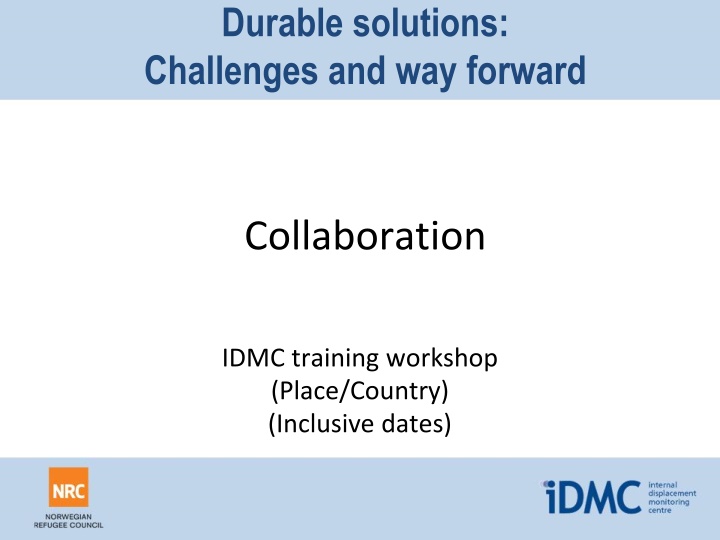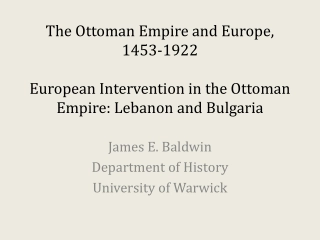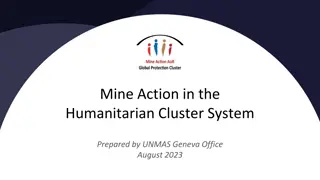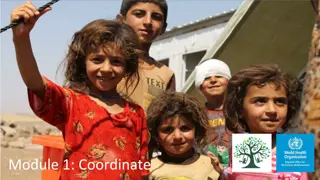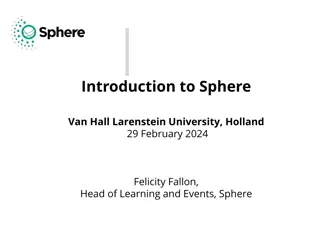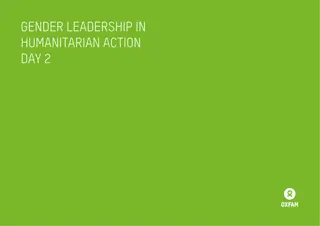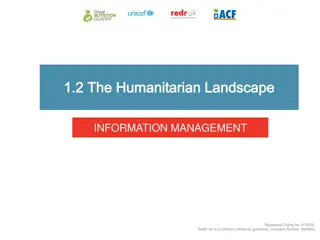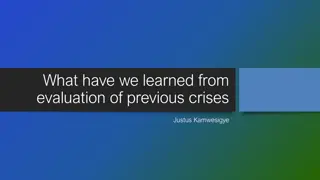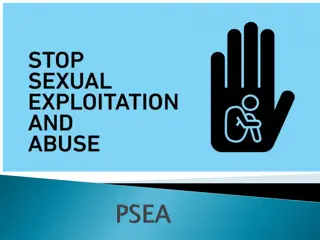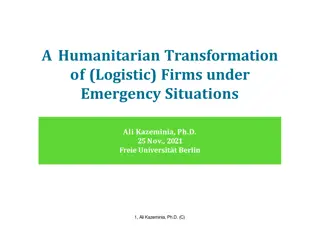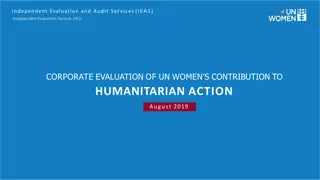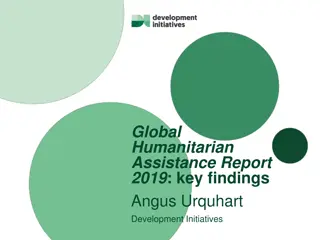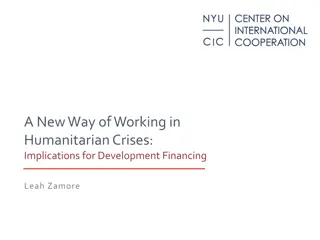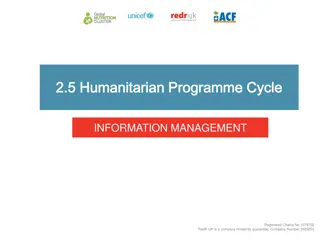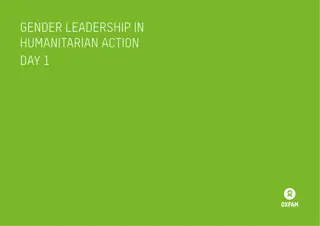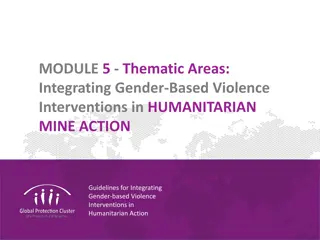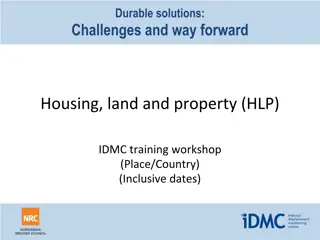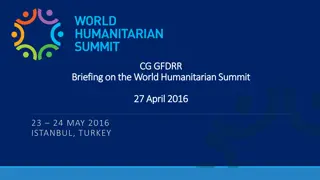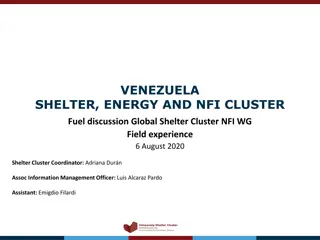Collaboration for Durable Solutions in Humanitarian Settings
This workshop addresses challenges and opportunities in achieving durable solutions for refugees and internally displaced persons. It emphasizes the importance of collaboration among various stakeholders, including humanitarian and development actors, to ensure long-term recovery and sustainable peace. Key topics covered include guiding principles, range of actors involved, coordinated engagement timelines, early recovery strategies, and the nexus between development, humanitarian, and peace-building efforts.
Download Presentation

Please find below an Image/Link to download the presentation.
The content on the website is provided AS IS for your information and personal use only. It may not be sold, licensed, or shared on other websites without obtaining consent from the author.If you encounter any issues during the download, it is possible that the publisher has removed the file from their server.
You are allowed to download the files provided on this website for personal or commercial use, subject to the condition that they are used lawfully. All files are the property of their respective owners.
The content on the website is provided AS IS for your information and personal use only. It may not be sold, licensed, or shared on other websites without obtaining consent from the author.
E N D
Presentation Transcript
Durable solutions: Challenges and way forward Collaboration IDMC training workshop (Place/Country) (Inclusive dates)
Collaboration for durable solutions Learning objectives: To reaffirm the rationale for collaboration to achieve durable solutions To identify primary and complementary responsibilities in doing so To understand the roles of various responders, including humanitarian and development actors, and the relationships between them in X country
Guiding Principles Principle 28 on authorities duty to establish conditions for the three settlement options Principle 29 on IDPs participation, and authorities duty in terms of restitution and compensation Principle 30 on authorities duty to ensure international humanitarian organisations and others have unimpeded access to IDPs
Range of actors IASC framework National Human Rights Authorities Development Humanitarian Local Communities Peace-building Political
Coordinated and timely engagement Timeline: when? Early recovery Emergency Development
Is a timeline appropriate? Prevention Emergency Durable solutions Early recovery Protection Development
Early recovery Basic services begins early in a humanitarian setting. It is a multi-dimensional process, guided by development principles. It aims to generate self- sustaining nationally owned and resilient processes for post-crisis recovery Livelihoods Shelter Governance Security Rule of Law Environment Social dimensions
Development, humanitarian and peace-building nexus Durable solutions included in national and local development, poverty reduction, economic reconstruction, transition and urban development plans Cooperation and planning across sectors via flexible, multi- year support for durable solutions Systematic integration of durable solutions into peace-building and stabilisation processes New deal for engagement in fragile states supports the achievement of durable solutions Special rapporteur on IDPs rights - 2013 report
Quote The complexity of the situation in X country defies traditional displacement interventions; camp management takes place at the same time as return; emergency interventions occur simultaneously with development projects. Do you agree or disagree? (10 minutes)
Durable solutions and peace-building Seizing the window of opportunity in the aftermath of conflict requires that international actors are, at a minimum, capable of responding coherently rapidly, and effectively in these areas, including the provision of basic services such as water, sanitation, health and primary education, and the safe and sustainable return and reintegration of IDPs and refugees.
UN secretary generals decision on ending displacement Development of a durable solutions strategy IDPs and returnees Aftermath of conflict Collective responsibility Government UN NGOs Civil society Collective process directed by resident coordinator Technical support from UNDP and UNHCR
Piloting of SG Framework 3 pilot countries: Afghanistan, C te d'Ivoire, Kyrgyzstan Challenges/questions Inter-Agency dynamics: no prioritization of DS strategies Long processes: strategies getting outdated National v. subnational DS strategies SG decision and peacekeeping operations HCT strategy: scarce focus on/involvement of the national or local authorities (i.e. lack of ownership)
Planning for durable solutions A place to be The national human rights commission, provisionally in charge of coordinated the response to IDPs, calls a meeting to discuss their relocation to Faraway Land. The individual institutions and civil society organisations involved are supposed to agree not only on the practicalities, but also on matters of substance - in particular IDPs consultation, assistance programmes and monitoring of potential protection concerns in the resettlement areas.
Actor mapping Aim: To map the various actors in X country that have responsibilities and roles in the achievement of durable solutions Work in the same groups as for the activity on criteria and use the same criteria you worked on Use Post-it notes to signify the various actors and their relations with each other - 15 to 20 minutes Market place - 10 minutes Conclusions - five minutes
IASC framework Durable solutions are not simple solutions, because they are usually linked to larger struggles for peace, security, territorial control, equal treatment and an equitable distribution of resources. Concerted efforts involving governments, international and non-governmental organisations and, most importantly, IDPs themselves are required to gradually make progress.
Case study: Cte dIvoire 2010 2014 93- 98 % des IDPS sont retournes I. Return of displaced populations II. Re-establishment of state authority III. Improvement in security situation IV. Will to address IDPs and war victims needs: national development plan; disarmament, demobilisation and reintegration V. Strong economic growth - 8 % A million IDPs 300,000 Ivorian refugees in the region VI. Ratification of Kampala Convention VII. Land and nationality laws adopted
Strategy justification Despite the international community s efforts, IDPs and host communities continue to face enormous difficulties 34% of adults said they had never been registered in the civil registry HLP problems continued to hamper the solution of local conflicts 38% of the needs expressed related to shelter Ongoing challenges in water, sanitation and education UNHCR monitoring
Strategy justification Uncoordinated approach by humanitarian organisations, without synergies or common vision Duplication of interventions, in some cases failing significantly to meet expressed needs Interventions becoming chronic
Envisaged approach Government takes ownership of process Strategy aligned to national development plan Implementation by follow-up committee Effective partnerships between humanitarian and development sectors Mapping of actions and interventions Inclusion IDPs, refugees, returnees and host communities Community-based approach in return areas Awareness-raising: social cohesion and human rights protection Respect for human rights and diversity Development of indicators Evaluation and close follow-up
Resouce mobilisation strategy UN system NGOs Bilateral and multilateral cooperation Durable solutions for IDPs and returnees Government of C te d Ivoire
Conclusions Authorities bear the main responsibility for the achievement of durable solutions Process involve a wide range of actors Development sector should be engaged and durable solutions pursued from the earliest possible stage The UN secretary general s decision on durable solutions encourages the adoption of strategies to close institutional gaps
